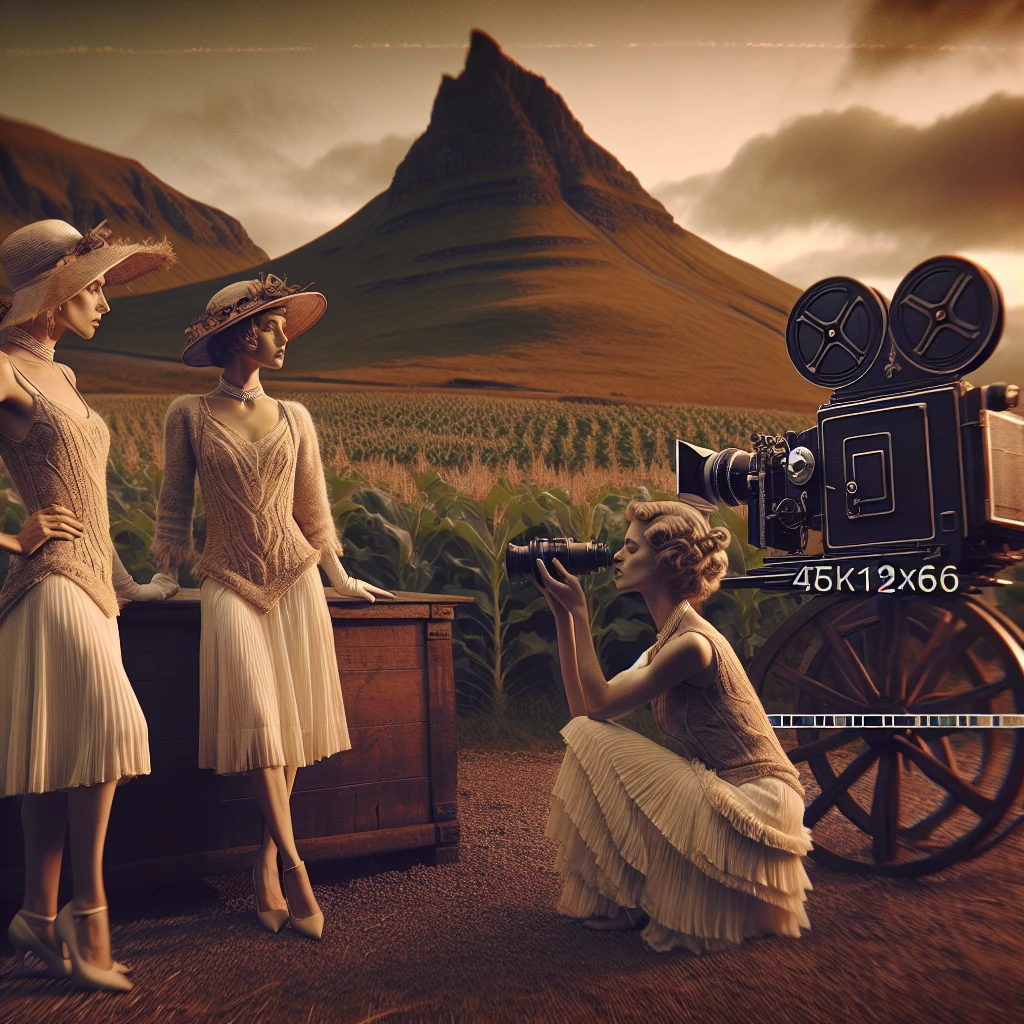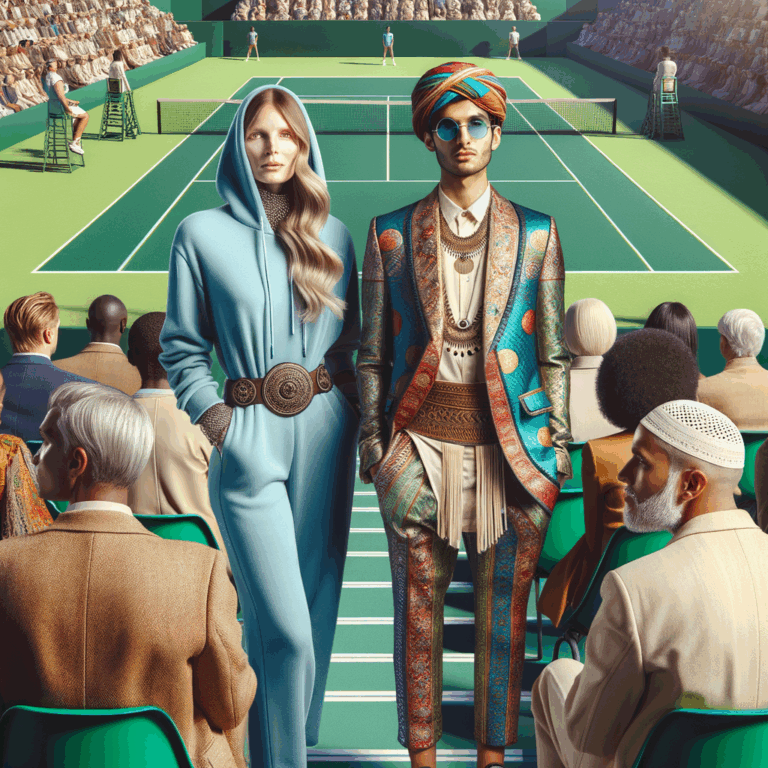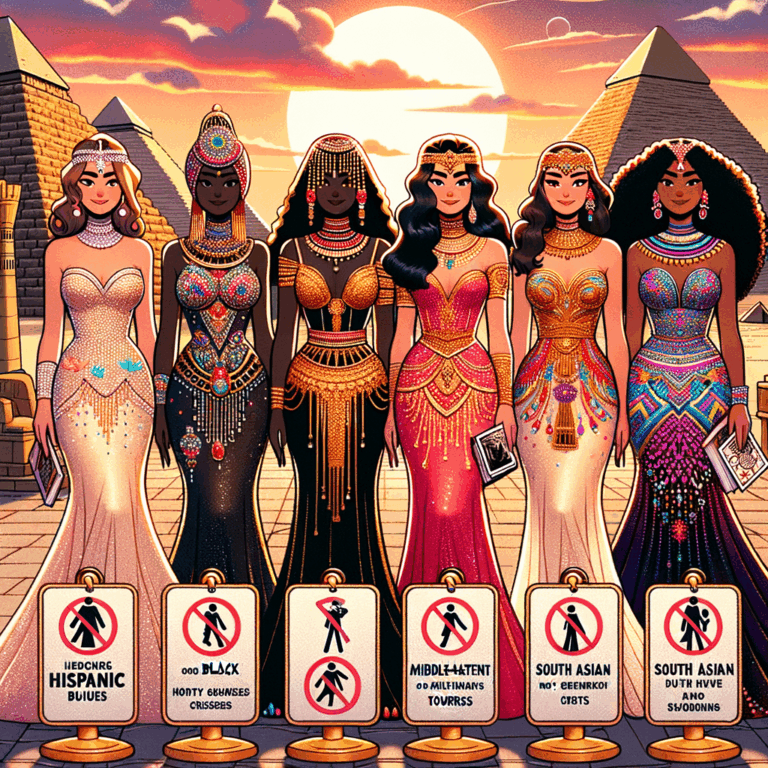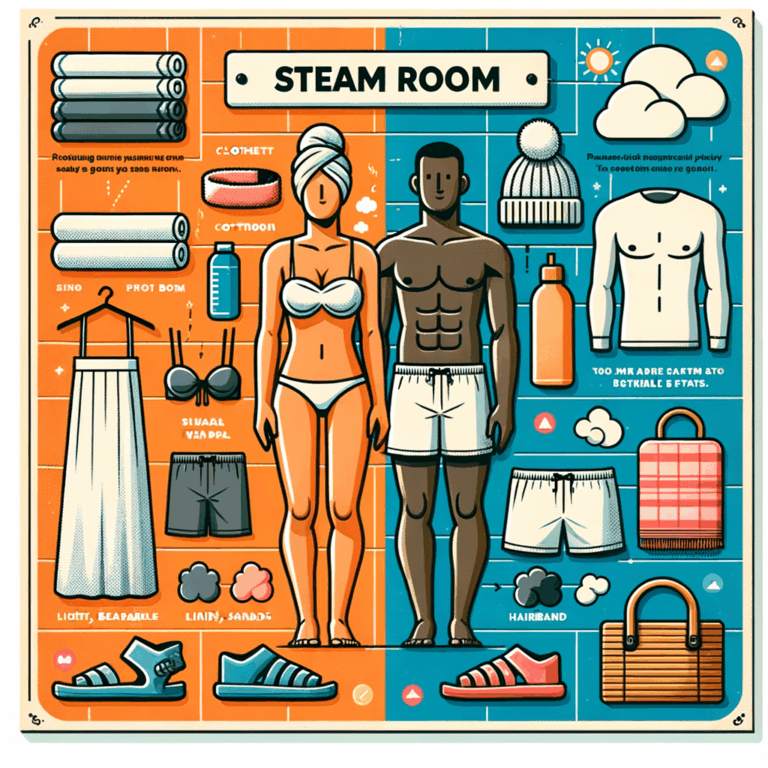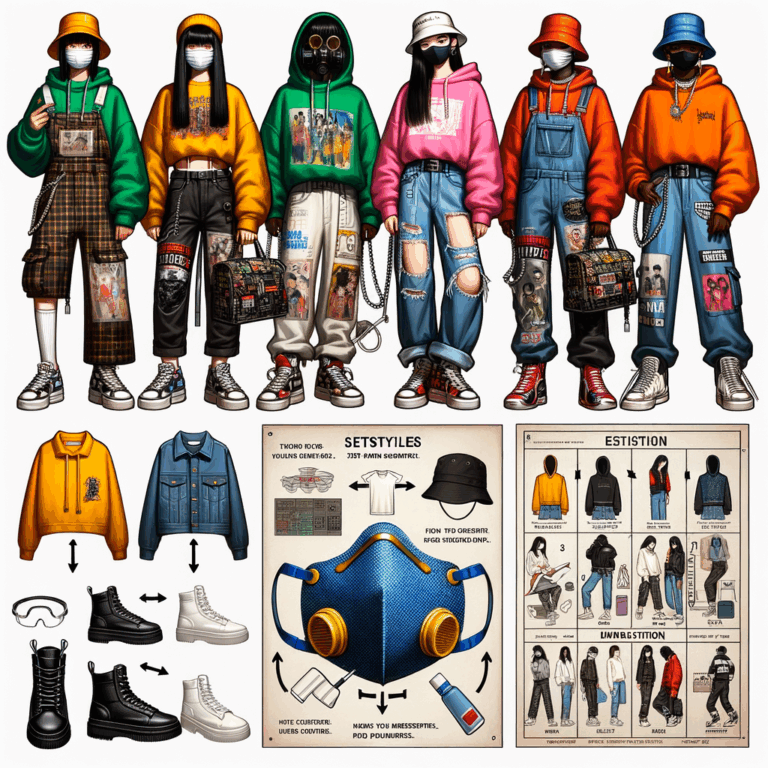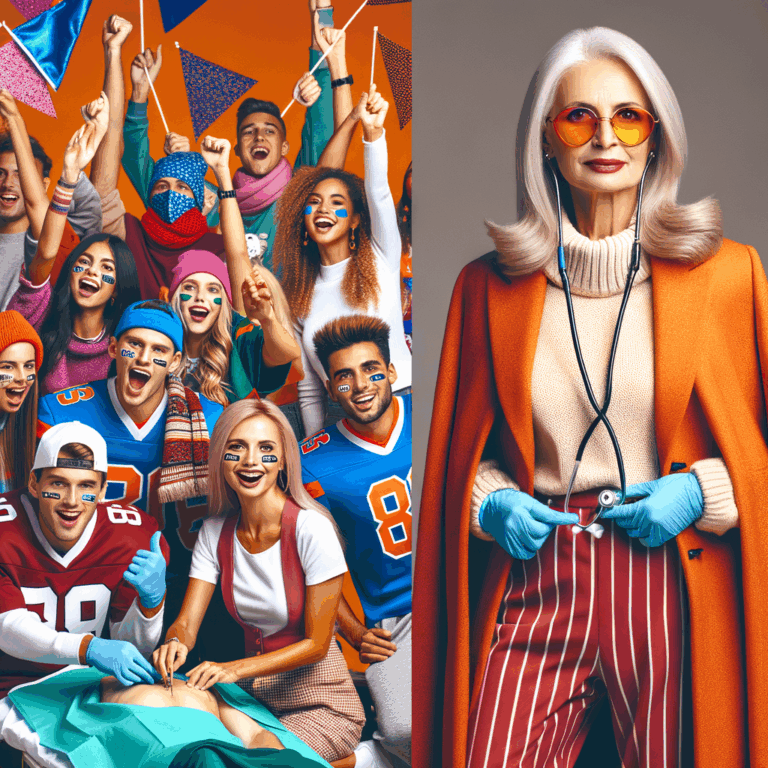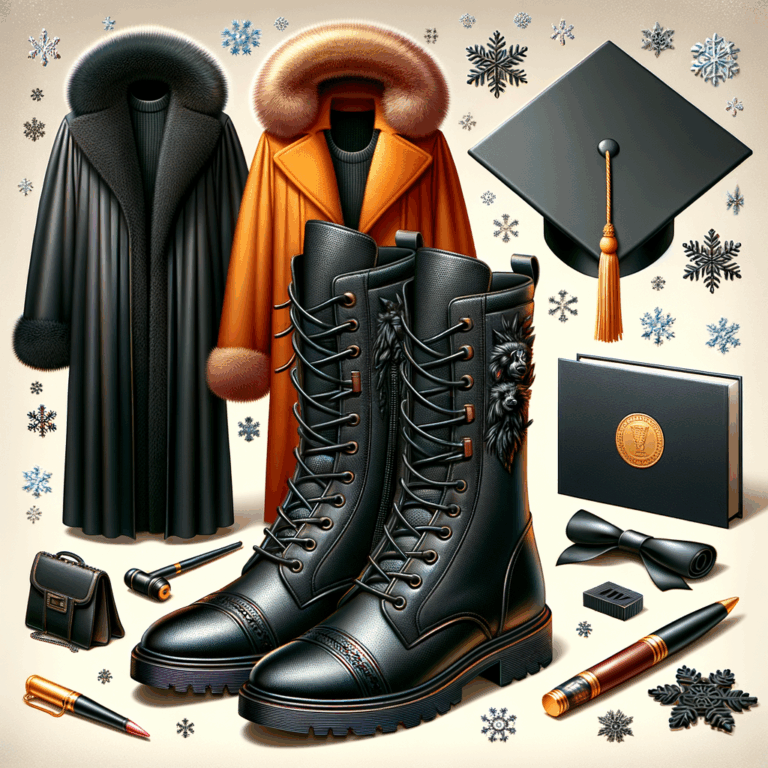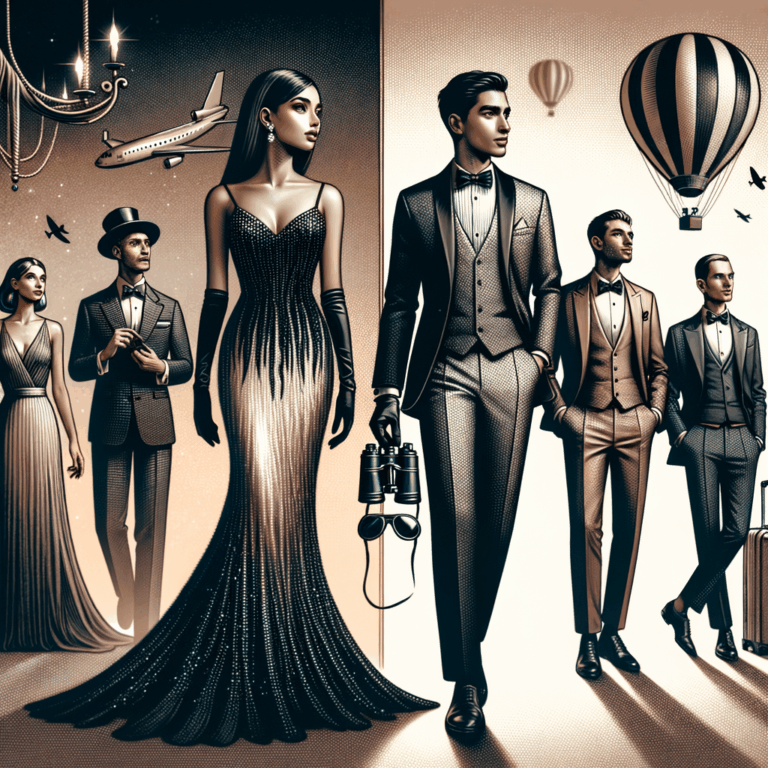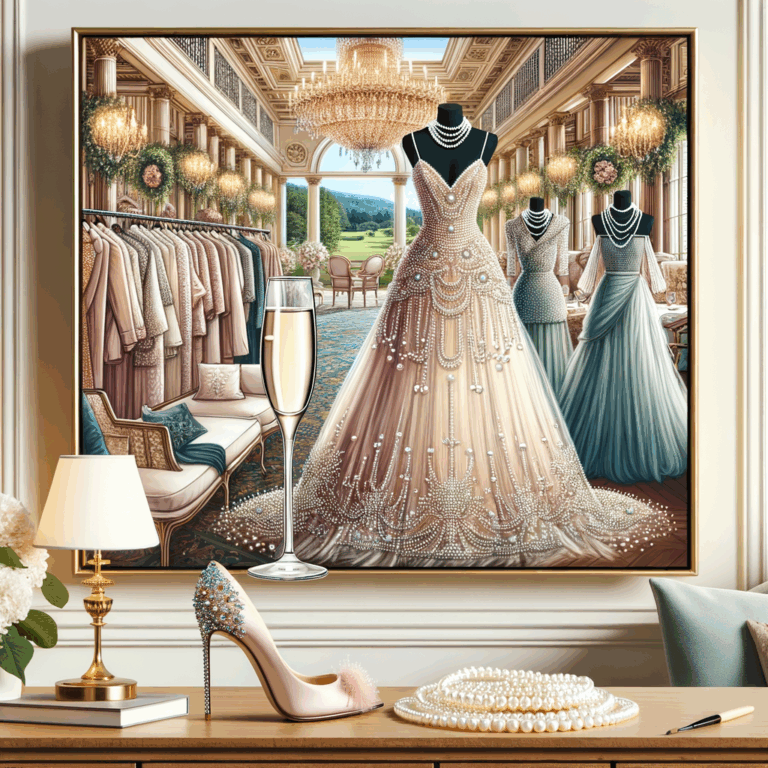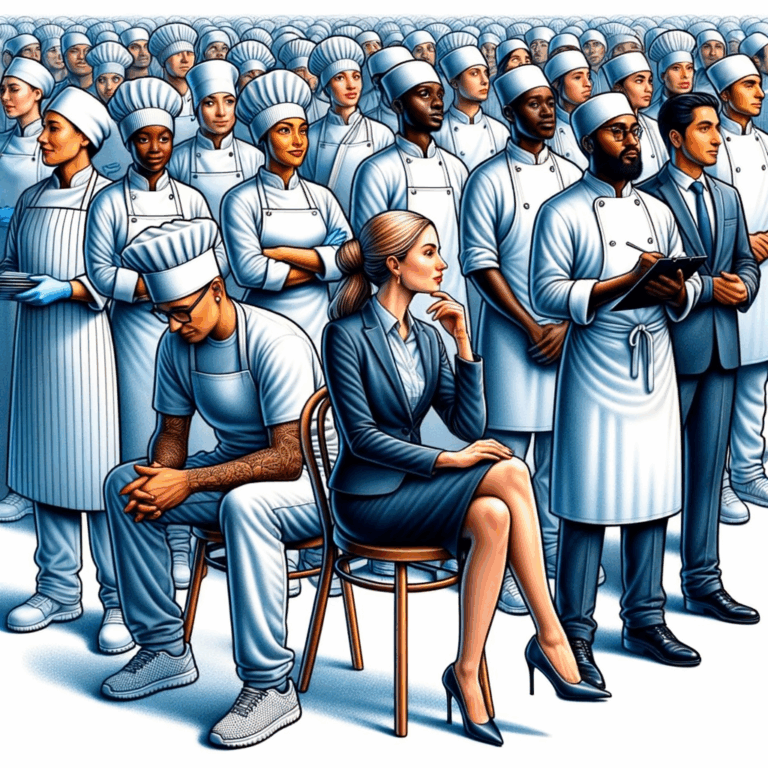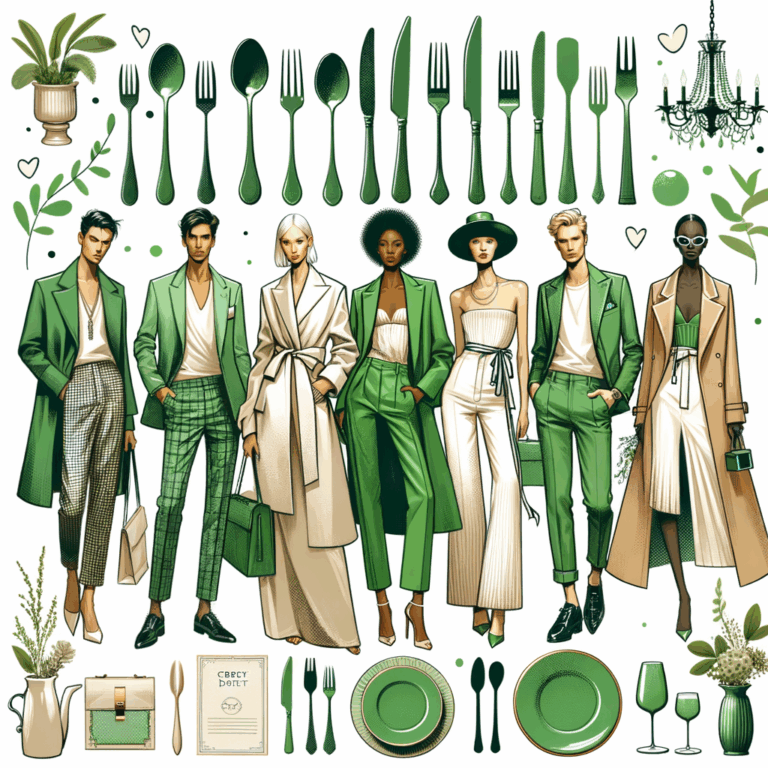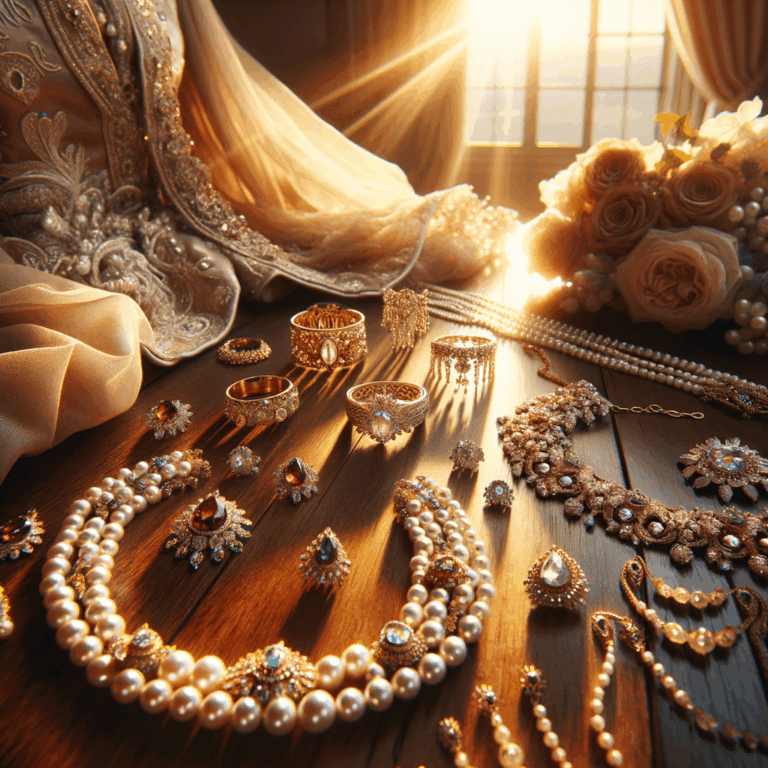
Blog
“Flappers and fashion: Unveiling the Roaring 20s style of women’s dress.”
Introduction
In the 1920s, women’s fashion underwent a significant transformation, reflecting the changing social and cultural norms of the time. The era was characterized by a shift towards more relaxed and liberating styles, as women embraced newfound freedoms and independence. The fashion of the 1920s, often referred to as the “Roaring Twenties” or the “Flapper Era,” featured shorter hemlines, looser silhouettes, and a more boyish figure. Women’s clothing became more practical and comfortable, with a focus on simplicity and functionality. The iconic flapper style emerged, characterized by dropped waistlines, straight cuts, and embellishments such as fringes and sequins. Overall, the fashion of the 1920s reflected a departure from the restrictive and elaborate styles of the previous decades, symbolizing a new era of freedom and self-expression for women.
Flapper Fashion: The Iconic Style of the 1920s
The 1920s was a decade of change and liberation for women. After the suffrage movement successfully fought for women’s right to vote, women began to break free from the constraints of traditional gender roles. This newfound freedom was reflected in the way women dressed during this time, with the emergence of the iconic flapper fashion.
The flapper style was a radical departure from the conservative and restrictive clothing of the previous era. Gone were the corsets and long, flowing skirts. Instead, flappers embraced a more boyish and androgynous look. They wore short, bobbed haircuts and opted for loose, shapeless dresses that allowed for ease of movement.
One of the key features of flapper fashion was the drop-waist silhouette. Dresses were designed to hang straight from the shoulders, with the waistline falling below the hips. This created a straight, column-like shape that was both modern and liberating. The drop-waist silhouette was a stark contrast to the hourglass figure that was idealized in the Victorian era.
Flapper dresses were often made from lightweight fabrics such as silk or chiffon. These materials allowed for fluidity and movement, which was essential for the energetic dances that became popular during the 1920s. Fringe and beading were also common embellishments on flapper dresses, adding a touch of glamour and sparkle to the overall look.
Accessories played a crucial role in completing the flapper ensemble. Long, beaded necklaces known as sautoirs were a popular choice, as they added a touch of elegance and sophistication. Cloche hats, which fit snugly over the head and had a downturned brim, were also a staple of flapper fashion. These hats were often adorned with feathers or ribbons, adding a playful and whimsical touch.
Makeup also underwent a dramatic transformation during the 1920s. Women began to experiment with bolder and more dramatic looks, inspired by the rising popularity of Hollywood films. Dark, smoky eyes were achieved using kohl eyeliner and mascara, while bright red lipstick became a signature of the flapper style.
The flapper fashion of the 1920s was not just about clothing and accessories; it was a statement of independence and rebellion. By rejecting the traditional feminine ideals of the past, flappers were challenging societal norms and asserting their own individuality. They were embracing a new era of freedom and self-expression.
The flapper style continues to be celebrated and admired today for its timeless elegance and boldness. It serves as a reminder of the courage and resilience of the women who paved the way for future generations. The 1920s may have been a century ago, but the spirit of the flapper lives on, inspiring women to embrace their own unique style and to never be afraid to break free from the constraints of society.
The Rise of the Bob: Women’s Hairstyles in the 1920s
The 1920s was a decade of change and liberation for women. It was a time when women began to break free from the constraints of traditional gender roles and embrace a new sense of independence. One of the most iconic symbols of this newfound freedom was the bob hairstyle.
In the early 20th century, long hair was seen as a symbol of femininity and beauty. Women spent hours styling their hair, often using elaborate updos and accessories to achieve the desired look. However, as the 1920s approached, a new trend began to emerge. Women started to cut their hair short, opting for a sleek and modern bob.
The bob was a radical departure from the long, flowing locks of the past. It was a bold statement that challenged societal norms and expectations. Women who embraced the bob were seen as daring and rebellious, willing to defy convention in pursuit of their own happiness and self-expression.
The bob came in many different variations, allowing women to choose a style that suited their individual tastes and personalities. Some women opted for a chin-length bob, while others went even shorter, with a cropped or boyish cut. No matter the length, the bob was characterized by its straight, blunt lines and lack of volume.
The bob was not only a fashion statement; it was also a practical choice for many women. With shorter hair, women no longer had to spend hours styling and maintaining their locks. The bob was low-maintenance and allowed women to focus on other aspects of their lives, such as their careers and personal interests.
The rise of the bob coincided with the rise of the flapper, a term used to describe young women who embraced a carefree and unconventional lifestyle. Flappers were known for their short hair, bold makeup, and fashionable clothing. They were the embodiment of the changing times and became a symbol of female empowerment.
The bob became synonymous with the flapper lifestyle, representing a rejection of traditional gender roles and a desire for freedom and equality. It was a hairstyle that defied societal expectations and challenged the notion that women should conform to a certain standard of beauty.
The bob also had a significant impact on the fashion industry. With shorter hair, women were able to experiment with new styles and accessories. Cloche hats, which fit snugly over the head, became popular among women with bobs. These hats complemented the sleek lines of the hairstyle and added a touch of elegance to any outfit.
In conclusion, the bob hairstyle was a defining feature of women’s fashion in the 1920s. It represented a departure from traditional gender roles and a desire for freedom and self-expression. The bob was a practical choice for many women, allowing them to focus on other aspects of their lives. It also had a significant impact on the fashion industry, inspiring new styles and accessories. The bob was more than just a hairstyle; it was a symbol of empowerment and a testament to the changing times.
The Influence of Coco Chanel on Women’s Fashion in the 1920s
The 1920s was a decade of change and liberation for women. It was a time when women began to break free from the constraints of traditional gender roles and embrace a new sense of independence and freedom. One of the most influential figures of this era was Coco Chanel, a French fashion designer who revolutionized women’s fashion and forever changed the way women dressed.
Coco Chanel was born in 1883 in Saumur, France. She grew up in a poor family and had a difficult childhood, but she had a natural talent for sewing and a keen eye for fashion. Chanel’s unique sense of style and her determination to challenge the status quo would eventually make her one of the most iconic figures in the fashion industry.
In the 1920s, Chanel introduced a new style of clothing that was both comfortable and elegant. She believed that women should be able to move freely and comfortably in their clothes, and she rejected the restrictive corsets and heavy fabrics that were popular at the time. Instead, Chanel embraced simplicity and minimalism, creating designs that were both practical and stylish.
One of Chanel’s most iconic contributions to women’s fashion was the little black dress. Before Chanel, black was considered a color of mourning and was rarely worn for any other occasion. But Chanel saw the beauty and versatility of black and believed that every woman should have a simple, elegant black dress in her wardrobe. The little black dress became a symbol of sophistication and timeless style, and it remains a staple in women’s fashion to this day.
Chanel also popularized the concept of mixing masculine and feminine elements in women’s clothing. She borrowed elements from men’s fashion, such as tailored jackets and trousers, and incorporated them into her designs for women. This blending of masculine and feminine styles was a radical departure from the traditional gender norms of the time and helped to redefine women’s fashion.
In addition to her innovative designs, Chanel also played a significant role in changing the way women thought about fashion. She believed that fashion should be accessible to all women, not just the wealthy elite. Chanel made her designs more affordable and accessible by using less expensive materials and introducing ready-to-wear collections. This democratization of fashion allowed women from all walks of life to embrace Chanel’s style and feel empowered by their clothing choices.
Chanel’s influence on women’s fashion in the 1920s cannot be overstated. Her designs and philosophy continue to inspire and influence designers to this day. Chanel’s legacy is one of empowerment and liberation, and her impact on women’s fashion is still felt nearly a century later.
In conclusion, Coco Chanel was a trailblazer in the world of fashion and a champion for women’s liberation. Her innovative designs and philosophy revolutionized women’s fashion in the 1920s and continue to inspire designers today. Chanel’s influence on women’s fashion in the 1920s was profound, and her legacy as a visionary and pioneer in the industry is one that will never be forgotten.
The Evolution of Women’s Evening Wear in the 1920s
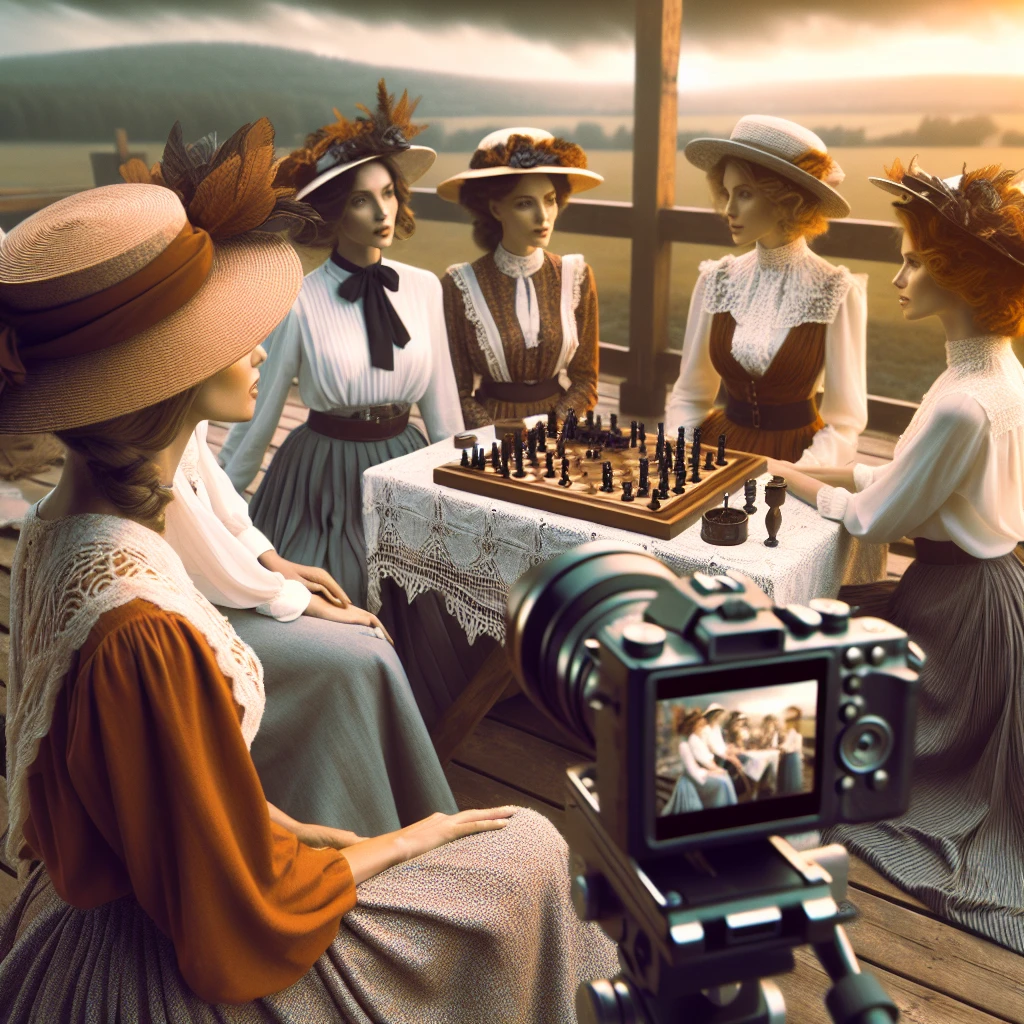
The 1920s was a decade of change and liberation for women. It was a time when women began to break free from the constraints of traditional gender roles and embrace a new sense of independence and freedom. This newfound freedom was reflected in the way women dressed, particularly in the evening wear of the era.
In the early 1920s, women’s evening wear was still heavily influenced by the styles of the previous decade. Long, flowing gowns with high necklines and full sleeves were the norm. These gowns were often made of luxurious fabrics such as silk and satin, and were adorned with intricate beading and embroidery. The overall look was elegant and refined, but also quite conservative.
However, as the decade progressed, women’s evening wear underwent a dramatic transformation. The influence of the Art Deco movement, with its emphasis on geometric shapes and bold colors, began to make its mark on fashion. Dresses became shorter and more streamlined, with dropped waistlines and straight silhouettes. The focus shifted from the waist to the hips, creating a more boyish figure.
One of the most iconic styles of the 1920s was the flapper dress. These dresses were characterized by their loose, straight cut and dropped waistline. They were often made of lightweight fabrics such as chiffon or silk, which allowed for ease of movement on the dance floor. The hemlines of flapper dresses were scandalously short for the time, often hitting just above the knee. This was a radical departure from the ankle-length gowns of the previous decade.
Flapper dresses were also known for their intricate beading and embellishments. Sequins, pearls, and feathers were popular adornments, adding a touch of glamour and decadence to the dresses. The overall effect was one of youthful exuberance and rebellion against societal norms.
In addition to the flapper dress, another popular style of evening wear in the 1920s was the robe de style. This style was characterized by its full, voluminous skirt and fitted bodice. The skirt was often made of layers of tulle or chiffon, creating a romantic and ethereal look. The robe de style was a more conservative alternative to the flapper dress, but still reflected the changing attitudes towards women’s fashion.
The evolution of women’s evening wear in the 1920s was a reflection of the changing times. Women were no longer content to be confined to the home and were demanding more freedom and independence. This was reflected in the way they dressed, with shorter hemlines, looser silhouettes, and bolder colors and patterns.
The 1920s was a decade of liberation and self-expression for women, and their evening wear was a reflection of this newfound freedom. From the elegant and refined gowns of the early 1920s to the daring and rebellious flapper dresses, women’s fashion underwent a radical transformation. The evolution of women’s evening wear in the 1920s was a testament to the changing attitudes towards women and their place in society.
The Impact of Art Deco on Women’s Fashion in the 1920s
The 1920s was a decade of change and liberation for women. It was a time when women began to break free from the constraints of traditional gender roles and embrace a new sense of independence and freedom. One of the most visible ways in which this newfound freedom was expressed was through fashion. The 1920s saw a radical shift in women’s fashion, with the emergence of the Art Deco movement playing a significant role in shaping the way women dressed during this time.
Art Deco was a design movement that emerged in the early 20th century and was characterized by its sleek, geometric shapes and bold, vibrant colors. It was a departure from the ornate and elaborate styles of the previous era, and its influence extended beyond just architecture and design. Art Deco had a profound impact on women’s fashion, revolutionizing the way women dressed and challenging societal norms.
One of the most iconic fashion trends of the 1920s was the flapper dress. Flapper dresses were characterized by their loose, straight silhouette, dropped waistline, and short hemline. They were a stark departure from the corsets and restrictive clothing that women had been accustomed to wearing. The flapper dress was a symbol of rebellion and liberation, and it allowed women to move and dance freely.
The Art Deco movement also influenced the materials and fabrics used in women’s fashion during the 1920s. The use of luxurious and exotic materials such as silk, satin, and velvet became popular, as did the use of bold and vibrant colors. Art Deco-inspired patterns and motifs, such as geometric shapes and stylized floral designs, were also commonly seen in women’s clothing.
Accessories also played a crucial role in defining women’s fashion in the 1920s. Long strands of pearls, feathered headbands, and beaded handbags were all popular accessories that added a touch of glamour and sophistication to any outfit. These accessories were often adorned with Art Deco-inspired designs, further emphasizing the influence of the movement on women’s fashion.
The impact of Art Deco on women’s fashion in the 1920s extended beyond just clothing and accessories. It also influenced hairstyles and makeup trends during this time. Women began to embrace shorter, more boyish hairstyles, such as the bob, which was a radical departure from the long, flowing locks that had been popular in previous decades. Makeup also became more daring and bold, with women opting for dark, smoky eyes and vibrant red lips.
The fashion of the 1920s was a reflection of the changing times and the newfound sense of freedom and independence that women were experiencing. The Art Deco movement played a significant role in shaping women’s fashion during this time, with its sleek, geometric designs and bold, vibrant colors revolutionizing the way women dressed. The flapper dress, luxurious materials, and accessories all became symbols of rebellion and liberation, allowing women to express themselves in ways that had previously been unthinkable. The impact of Art Deco on women’s fashion in the 1920s was profound, and its influence can still be seen in fashion today.
Women’s Sportswear in the 1920s: Breaking Barriers
The 1920s was a decade of change and liberation for women. It was a time when women began to break free from the constraints of traditional gender roles and embrace a more independent and active lifestyle. One area where this newfound freedom was particularly evident was in women’s sportswear.
In the early 20th century, women’s fashion was still heavily influenced by Victorian ideals of modesty and femininity. Women were expected to dress in long, flowing dresses that covered their bodies from head to toe. However, as the 1920s dawned, women started to rebel against these restrictive clothing norms.
One of the key factors that contributed to the transformation of women’s sportswear in the 1920s was the increasing popularity of sports and physical activities among women. As more women began to participate in sports such as tennis, golf, and swimming, they needed clothing that allowed them to move freely and comfortably.
The iconic flapper style emerged during this time, characterized by its loose and boyish silhouette. Flapper dresses were typically sleeveless and had dropped waistlines, allowing women to move their arms and legs more freely. These dresses were often made from lightweight fabrics such as silk or chiffon, which further enhanced their comfort and ease of movement.
Another significant development in women’s sportswear during the 1920s was the introduction of shorter hemlines. Prior to this decade, it was considered scandalous for women to show their legs in public. However, as women became more active and engaged in sports, shorter skirts became more acceptable.
The introduction of the iconic “bob” hairstyle also played a role in shaping women’s sportswear in the 1920s. The bob was a short, cropped hairstyle that allowed women to participate in physical activities without the hassle of long hair. This hairstyle became synonymous with the flapper look and further emphasized the sense of freedom and independence that women were embracing.
In addition to the physical changes in women’s sportswear, the 1920s also saw a shift in attitudes towards women’s participation in sports. Women’s sports clubs and organizations began to emerge, providing women with opportunities to compete and excel in various athletic pursuits. These organizations also played a crucial role in promoting and popularizing women’s sportswear.
The transformation of women’s sportswear in the 1920s was not just about fashion; it was a reflection of the changing social and cultural landscape of the time. Women were no longer content to be confined to the domestic sphere; they wanted to be active participants in society. The new sportswear allowed them to do just that, breaking down barriers and challenging traditional notions of femininity.
In conclusion, the 1920s was a transformative decade for women’s sportswear. The emergence of the flapper style, shorter hemlines, and the bob hairstyle all contributed to a sense of freedom and independence for women. These changes not only revolutionized women’s fashion but also paved the way for women to participate in sports and physical activities on an equal footing with men. The women of the 1920s were trailblazers, breaking barriers and inspiring future generations of women to embrace their own sense of style and athleticism.
The Role of Accessories in Women’s Fashion in the 1920s
The 1920s was a decade of change and liberation for women. It was a time when women began to break free from the constraints of traditional gender roles and embrace a more independent and modern lifestyle. One of the ways in which women expressed their newfound freedom was through fashion. The 1920s saw a dramatic shift in women’s clothing, with hemlines rising, waistlines dropping, and a focus on comfort and practicality. But it wasn’t just the clothing itself that changed; accessories also played a crucial role in defining women’s fashion in the 1920s.
Accessories were an essential part of a woman’s outfit in the 1920s. They were not just an afterthought but were carefully chosen to complement and enhance the overall look. One of the most iconic accessories of the time was the cloche hat. This close-fitting hat with a low, bell-shaped crown became synonymous with the flapper style and was worn by women of all ages. The cloche hat not only added a touch of elegance to an outfit but also served a practical purpose by keeping the hair in place and protecting it from the elements.
Another popular accessory in the 1920s was the long strand of pearls. Pearls were seen as a symbol of wealth and sophistication and were often worn in multiple strands. They added a touch of glamour to any outfit and were a favorite among flappers who wanted to make a statement. Pearls were often paired with other accessories such as feather boas, long gloves, and cigarette holders, creating a look that was both luxurious and rebellious.
Handbags also played a significant role in women’s fashion in the 1920s. As women began to venture out of their homes and into the workforce, they needed a practical way to carry their belongings. The handbag became a symbol of independence and freedom, and women embraced a variety of styles, from small clutch bags to larger shoulder bags. These bags were often made of luxurious materials such as silk or velvet and were adorned with intricate beading or embroidery.
Shoes were another important accessory in the 1920s. With the rise of shorter hemlines, women’s shoes became more visible, and they were no longer hidden under long skirts. The most popular style of shoe during this time was the Mary Jane, a low-heeled shoe with a strap across the instep. Mary Janes were comfortable and practical, making them the perfect choice for women who were on their feet all day. They were often made of patent leather and came in a variety of colors to match any outfit.
In addition to these accessories, women in the 1920s also embraced the use of makeup. While makeup had been frowned upon in previous decades, it became more socially acceptable in the 1920s. Women began to experiment with bold colors and dramatic looks, using products such as rouge, lipstick, and mascara. The use of makeup allowed women to express their individuality and enhance their natural beauty.
In conclusion, accessories played a crucial role in defining women’s fashion in the 1920s. From cloche hats to long strands of pearls, these accessories added a touch of elegance and glamour to women’s outfits. Handbags and shoes provided both practicality and style, while makeup allowed women to express their individuality. The 1920s was a time of change and liberation for women, and their fashion choices reflected this newfound freedom.
The Changing Silhouette: Women’s Clothing Shapes in the 1920s
The 1920s was a decade of change and liberation for women. It was a time when women began to break free from the constraints of the past and embrace a new sense of freedom and independence. One of the most visible ways in which this change was expressed was through fashion. The clothing styles of the 1920s were a radical departure from the corsets and long skirts of the previous era. Women’s clothing in the 1920s was characterized by a new silhouette that reflected the changing attitudes and aspirations of women.
Gone were the days of the hourglass figure and the tightly cinched waist. In the 1920s, women’s clothing became more relaxed and comfortable. The new silhouette was straight and boyish, with a focus on the natural shape of the body. This was a stark contrast to the restrictive and constricting clothing of the past. Women were no longer expected to conform to a certain ideal of beauty; instead, they were encouraged to embrace their own individuality and express themselves through their clothing.
One of the key elements of the new silhouette was the drop waist. Dresses in the 1920s were designed to hang straight from the shoulders, with no waistline to speak of. This created a loose and flowing look that was both comfortable and stylish. The drop waist was a symbol of the new freedom that women were experiencing, both in terms of fashion and in their lives more generally.
Another important aspect of women’s clothing in the 1920s was the shorter hemline. Skirts and dresses became shorter, often ending just above the knee. This was a radical departure from the ankle-length skirts of the past, and it was seen as a bold and daring statement. The shorter hemline allowed women to move more freely and engage in activities that were previously considered inappropriate or unladylike. It was a symbol of the new sense of liberation that women were experiencing in the 1920s.
In addition to the drop waist and shorter hemline, women’s clothing in the 1920s also featured other elements that reflected the changing attitudes of the time. For example, trousers became more acceptable for women to wear, although they were still considered somewhat controversial. Women also began to wear more practical and comfortable clothing for sports and outdoor activities, such as knitted sweaters and pleated skirts. These new styles of clothing allowed women to participate in activities that were previously reserved for men, and they symbolized the growing equality between the sexes.
The changing silhouette of women’s clothing in the 1920s was a reflection of the changing times. It was a time of liberation and empowerment for women, and their clothing choices reflected this newfound freedom. The drop waist, shorter hemline, and more practical styles of clothing all symbolized the changing attitudes and aspirations of women in the 1920s. Women were no longer content to be confined to the roles and expectations of the past; instead, they were ready to embrace a new sense of independence and self-expression. The clothing styles of the 1920s were a visual representation of this new era, and they continue to inspire and influence fashion today.
The Influence of Hollywood on Women’s Fashion in the 1920s
The 1920s was a decade of change and liberation for women. It was a time when women began to break free from the constraints of traditional gender roles and embrace a new sense of independence and freedom. One of the ways in which women expressed this newfound freedom was through their fashion choices. And perhaps no other industry had a greater influence on women’s fashion in the 1920s than Hollywood.
Hollywood was a burgeoning industry in the 1920s, and its influence on popular culture was growing rapidly. Women flocked to the movie theaters to see their favorite stars on the silver screen, and they were captivated by the glamorous and sophisticated styles they saw on the actresses. Hollywood became a source of inspiration for women’s fashion, and women began to emulate the looks of their favorite movie stars.
One of the most iconic fashion trends of the 1920s was the flapper style. This style was characterized by its loose, shapeless silhouette and its short hemlines. It was a departure from the corsets and restrictive clothing of the past, and it allowed women to move and dance with ease. The flapper style was heavily influenced by Hollywood, with actresses like Clara Bow and Louise Brooks popularizing the look on the silver screen.
Another trend that was popularized by Hollywood in the 1920s was the bob haircut. Women began to cut their hair short and wear it in a sleek, straight style, inspired by actresses like Colleen Moore and Joan Crawford. The bob was a symbol of modernity and rebellion, and it became a defining feature of the flapper look.
In addition to the flapper style and the bob haircut, Hollywood also influenced women’s fashion through its use of luxurious fabrics and glamorous accessories. Actresses like Greta Garbo and Marlene Dietrich were known for their opulent and extravagant wardrobes, and women aspired to recreate their glamorous looks. Silk, satin, and velvet were popular fabrics in the 1920s, and women adorned themselves with fur stoles, feathered headbands, and long strands of pearls.
The influence of Hollywood on women’s fashion in the 1920s was not limited to the silver screen. Magazines and fashion designers also played a role in popularizing Hollywood-inspired looks. Fashion magazines featured articles and advertisements showcasing the latest trends, and designers created garments that were inspired by the styles seen in the movies. Women could now purchase ready-to-wear clothing that allowed them to recreate the glamorous looks of their favorite movie stars.
The influence of Hollywood on women’s fashion in the 1920s cannot be overstated. It was a time of great change and innovation in the fashion industry, and Hollywood played a pivotal role in shaping the styles of the decade. Women were no longer confined to the restrictive clothing of the past, and they embraced a new sense of freedom and self-expression through their fashion choices. Hollywood provided them with inspiration and a sense of glamour, and women eagerly embraced the looks of their favorite movie stars. The influence of Hollywood on women’s fashion in the 1920s was a testament to the power of the silver screen and its ability to shape popular culture.
Women’s Fashion Rebellion: Challenging Social Norms in the 1920s
The 1920s was a decade of rebellion and change, and nowhere was this more evident than in women’s fashion. After years of being confined to corsets and long, heavy skirts, women were ready to break free from societal expectations and embrace a new sense of freedom and individuality. The fashion of the 1920s was a reflection of this desire for change, with women opting for shorter hemlines, looser silhouettes, and bolder styles.
One of the most iconic fashion trends of the 1920s was the flapper dress. These dresses were characterized by their dropped waistlines, loose fit, and above-the-knee hemlines. They were a stark departure from the restrictive and modest clothing of previous decades, and they symbolized the newfound freedom and independence that women were experiencing. Flapper dresses were often made of lightweight fabrics like silk or chiffon, which allowed for ease of movement and a more relaxed fit. They were also adorned with intricate beading and fringe, adding a touch of glamour and sophistication to the overall look.
In addition to flapper dresses, women in the 1920s also embraced other daring fashion choices. They began to wear trousers, a garment that had previously been reserved for men. These trousers, known as “knickerbockers” or “bloomers,” were often paired with loose-fitting blouses and jackets, creating a more androgynous look. This departure from traditional gender norms was a bold statement of defiance and a rejection of societal expectations.
Accessories also played a crucial role in defining women’s fashion in the 1920s. Hats, in particular, were a popular accessory and were often adorned with feathers, ribbons, or flowers. These hats added a touch of elegance and sophistication to any outfit and were a way for women to express their individual style. Other accessories, such as long strands of pearls, beaded handbags, and cloche hats, were also popular during this time and added a sense of glamour to women’s ensembles.
The fashion of the 1920s was not only a rebellion against societal norms but also a reflection of the changing times. The end of World War I brought about a sense of optimism and a desire for a new beginning. Women, in particular, were eager to shed the constraints of the past and embrace a more modern and progressive way of life. The fashion of the 1920s was a visual representation of this desire for change and a celebration of the newfound freedom and independence that women were experiencing.
In conclusion, the fashion of the 1920s was a bold and daring departure from the traditional clothing of previous decades. Women embraced shorter hemlines, looser silhouettes, and bolder styles, symbolizing their desire for freedom and individuality. Flapper dresses, trousers, and accessories like hats and pearls were all popular choices during this time and added a touch of glamour and sophistication to women’s ensembles. The fashion of the 1920s was not only a rebellion against societal norms but also a reflection of the changing times and a celebration of the newfound freedom and independence that women were experiencing.
Q&A
1. Women in the 1920s often wore loose-fitting dresses that reached below the knee.
2. The popular dress style of the 1920s was known as the “flapper dress,” characterized by its straight silhouette and dropped waistline.
3. Flapper dresses were typically made of lightweight fabrics such as silk or chiffon.
4. Women in the 1920s often wore sleeveless or short-sleeved dresses.
5. The neckline of dresses in the 1920s varied, with some featuring high necklines and others having low or V-necklines.
6. Women in the 1920s often accessorized their dresses with long strands of pearls.
7. Cloche hats were a popular accessory for women in the 1920s, often worn with their dresses.
8. Women in the 1920s also wore stockings or tights with their dresses.
9. Shoes worn by women in the 1920s were typically low-heeled and made of leather or fabric.
10. Women in the 1920s embraced a more relaxed and liberated fashion style compared to previous decades.
Conclusion
In the 1920s, women’s fashion underwent significant changes. They embraced a more liberated and modern style, characterized by shorter hemlines, looser silhouettes, and a focus on comfort and practicality. The iconic flapper style emerged, featuring dropped waistlines, straight cuts, and sleeveless or short-sleeved dresses. Women also started wearing trousers, albeit primarily for sports or leisure activities. Overall, the fashion of the 1920s reflected the changing societal norms and the desire for freedom and independence among women.
Related Posts
What to Wear to a Tennis Match: Stunning Picks
Looking to ace your style game at the next tennis match? Discover how a chic blue hoodie can become your winning choice, blending casual comfort with a dash of courtside chic.
Stunning Black Tie Attire: Effortless Elegance Unveiled
Whether youre deciding what to wear at a concert or a high-society gala, discovering your ideal black tie outfit is all about embracing effortless elegance that echoes your unique style and sophistication. Lets dive into crafting that perfect, head-turning ensemble together.
Egypt Dress Code: Must-Have Tips for Female Tourists
Navigating the dress code in Egypt can feel like a delicate dance, but fear not, fashionable traveler! Our expert tips will help you dress respectably while still showcasing your unique style, ensuring every moment of your journey is as comfortable as it is chic.
Must-Have Outfits for a Steam Room Visit
Step into the steam room with confidence and elegance by mastering **what to wear to a steam room**. Our guide ensures you stay effortlessly stylish and supremely comfortable, no matter the humidity!
K-Pop Concert Attire: Must-Have Outfits for Trendsetters
Step into the spotlight at your next K-Pop concert with outfits that echo the electrifying energy of BTS, BLACKPINK, or EXO! Let us guide you through selecting vibrant, trend-setting pieces that not only capture the essence of K-pop culture but also showcase your individual flair and style.
Stunning Outfits for College Football Games: Score Big!
Dress to impress at your next college football game with Covetis luxurious and spirited fashion finds! Whether you’re cheering from the bleachers or a cozy college bar, discover outfits that truly resonate with your personal style and amplify your game-day experience.
Stunning Shoe Styles for Winter Graduations!
Deciding what to wear for a winter graduation can be a breeze, especially with the right shoes! Let me guide you through picking stylish yet practical footwear that will have you walking across that stage with confidence and grace.
What to Wear: Stunning Outfits for Theater Nights
Soaring above the clouds in a hot air balloon is an unparalleled adventure, and choosing what to wear is crucial for comfort and style. Lets ensure your outfit is as breathtaking as the view, blending chic with practicality for an unforgettable aerial experience.
Country Club Chic: Must-Have Outfits for Elegant Evenings
For your next pearls and prosecco bridal shower, embrace the timeless allure of country club chic with outfits that blend classic elegance with a touch of modern sophistication. Discover how to curate that perfect ensemble that will have you radiating confidence and style at any upscale event.
Stunning & Safe: Best Outfits for Food Workers
Stepping into the courtroom as a witness requires a thoughtful selection of attire that reflects professionalism and respect. Discover the key elements of dressing appropriately for court to ensure you present a dignified and sincere image that supports the gravitas of the proceedings.
Fine Dining Fashion: Must-Have Looks for Green Blazers
Stepping into a fine dining restaurant requires a touch of elegance and a dash of style; discover how a sophisticated green blazer can elevate your next gourmet outing, ensuring you look as exquisite as the dishes being served.
Stunning Jewelry Must-Haves for Bridesmaids
Deciding what jewelry to wear as a bridesmaid is more than just adornment; its about crafting moments and memories. Let me guide you through selecting stunning pieces that complement the bridal glow and celebrate your unique touch to the day’s enchantment.















